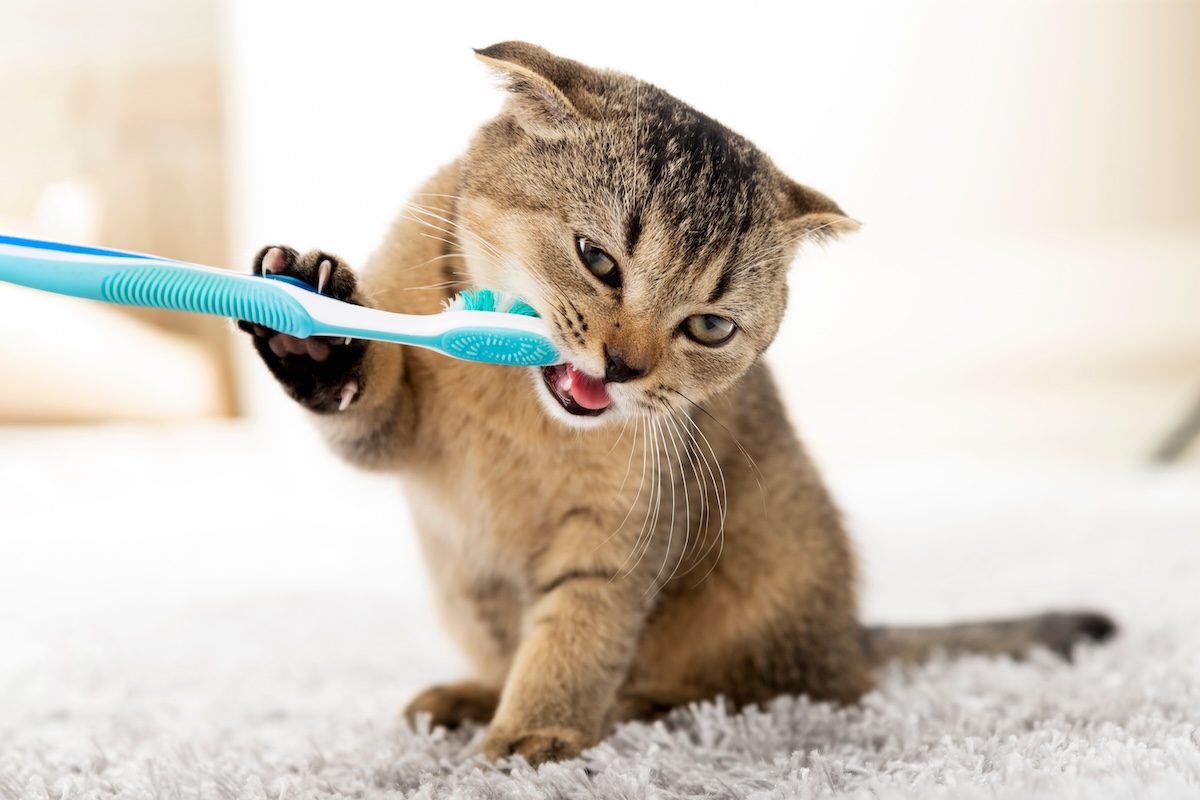Feline Dentistry
Keeping Your Cat's Smile Brighter Than Ever
Dental disease is one of the most common health issues in cats yet remains one of the most underdiagnosed due to the cat’s ability to hide pain as a survival mechanism. Gingivitis, periodontal disease, and tooth resorption can cause significant discomfort and pain, affecting a cat’s quality of life without the pet parent even noticing. Recognizing the signs of dental issues early can make a significant difference in treatment outcomes. Here are some clinical signs that may indicate your cat is experiencing dental problems: bad breath (halitosis), drooling, visible tartar buildup, swollen or bleeding gums, difficulty eating/reduced appetite, teeth chattering, pawing at the mouth or face, weight loss, lack of grooming/matted coat, reduced activity/playing. A thorough oral examination will help look for signs of dental disease, infection, or abnormalities.
Professional Pet Dental Care
Performing a dental cleaning under general anesthesia (as opposed to sedation) is the safest way to allow for a thorough cleaning of your cat’s teeth, to obtain dental x-rays and conduct extractions if necessary. Every anesthetized patient at the CSC has a skilled, licensed veterinary nurse monitoring their vitals, and we follow published veterinary anesthesia guidelines (AAHA/AAFP) to ensure your pet is under the safest of conditions while under our care. The CSC team is also experienced and equipped to handle high-risk patients including those with advanced kidney disease, heart disease, and diabetes. In the case extractions are required, all patients receive a custom pain protocol that includes local anesthetic nerve blocks, injectable pain medication and/or oral or transdermal pain medication to go home.
Other common dental diseases that are diagnosed and treated at the CSC include tooth resorption, fractured teeth, chronic gingivostomatitis, hyperplastic gingivitis (juvenile and adult), oral squamous cell carcinoma (SCC).



